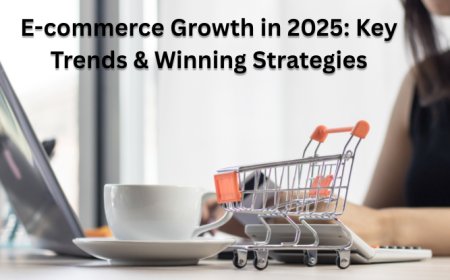Global Trade in 2025: Key Challenges and Winning Strategies
Trade policies shift, tariffs rise, and businesses face uncertainty. Adapting fast is key to thriving in global trade.

Section 1: Breakdown of the Challenge
The global trade environment has been significantly altered by recent policy changes. The United States' implementation of extensive tariffs—ranging from 10% to 50% on imports from various countries—has escalated trade tensions and prompted retaliatory measures from key trading partners. For instance, China faces a 34% tariff on its goods, while the European Union contends with a 20% levy. These measures have raised the average U.S. tariff rate to an unprecedented 22%, the highest since the early 20th century. Economists warn that such protectionist actions could lead to stagflation, characterized by slowed economic growth and increased inflation, thereby complicating the global economic outlook.
Section 2: Step-by-Step Strategy for Businesses
Diversify Supply Chains: To mitigate risks associated with tariff impositions, businesses should explore alternative sourcing options and consider regionalizing supply chains. This approach can reduce dependency on single markets and enhance resilience against geopolitical disruptions.
Leverage Trade Agreements: Stay informed about existing and emerging free trade agreements that could offer tariff advantages. Engaging with trade associations and utilizing government resources can provide insights into favorable trade routes and partnerships.
Invest in Technology: Adopting advanced technologies, such as artificial intelligence and blockchain, can enhance supply chain visibility and efficiency. These tools aid in predictive analytics, enabling proactive responses to potential disruptions.
Monitor Regulatory Changes: Establish a dedicated team to track international trade policies and tariffs. Regular updates can inform strategic decisions and ensure compliance with evolving regulations.
Engage in Advocacy: Participate in industry forums and collaborate with peers to advocate for policies that promote fair and open trade. Collective efforts can influence policymakers and contribute to a more stable trade environment.
Section 3: Bonus Tips and Mistakes to Avoid
Do: Foster relationships with multiple suppliers across different regions to enhance flexibility.
Don't: Rely solely on historical trade patterns; the current environment demands adaptability and forward-thinking strategies.
Do: Utilize trade finance tools to manage cash flow effectively amid tariff-induced cost fluctuations.
Don't: Neglect the importance of cultural and political considerations when entering new markets; understanding local dynamics is crucial.
Conclusion
The global trade landscape in 2025 is fraught with complexities stemming from protectionist policies and geopolitical tensions. Businesses that proactively adapt by diversifying supply chains, leveraging trade agreements, investing in technology, and staying abreast of regulatory changes will be better positioned to navigate these challenges. By embracing strategic agility and fostering collaborative advocacy, companies can not only mitigate risks but also uncover new opportunities in the evolving world of international trade.
What's Your Reaction?

















































